- Home
- H. G. Wells
Island of Dr. Moreau Page 2
Island of Dr. Moreau Read online
Page 2
Patrick Parrinder
Introduction
(New readers are advised that this Introduction makes the details of the plot explicit.)
H. G. Wells’s The Island of Doctor Moreau is one of those books that, once read, is rarely forgotten. Jorge Luis Borges called it an ‘atrocious miracle’ and made large claims for it. Speaking of Wells’s early tales – The Island of Doctor Moreau among them – he said, ‘I think they will be incorporated, like the fables of Theseus or Ahasuerus, into the general memory of the species and even transcend the fame of their creator or the extinction of the language in which they were written’ (Other Inquisitions 1932–1952, 1968).
This has proved true, if film may be considered a language unto itself. The Island of Doctor Moreau has inspired three films – two of them quite bad – and doubtless few who saw them remembered that it was Wells who authored the book. The story has taken on a life of its own, and, like the offspring of Mary Shelley’s Frankenstein, has acquired attributes and meanings not present in the original. Moreau himself, in his filmic incarnations, has drifted towards the type of the Mad Scientist, or the Peculiar Genetic Engineer, or the Tyrant-in-training, bent on taking over the world; whereas Wells’s Moreau is certainly not mad, and is a mere vivisectionist, and has no ambitions to take over anything whatsoever.
Borges’s use of the word ‘fable’ is suggestive, for – despite the realistically rendered details of its surface – the book is certainly not a novel, if by that we mean a prose narrative dealing with observable social life. ‘Fable’ points to a certain folkloric quality that lurks in the pattern of this curious work, as animal faces may lurk in the fronds and flowers of an Aubrey Beardsley design. The term may also indicate a lie – something fabulous or invented, as opposed to that which demonstrably exists – and employed this way it is quite apt, as no man ever did or ever will turn animals into human beings by cutting them up and sewing them together again. In its commonest sense, a fable is a tale – like those of Aesop – meant to convey some useful lesson. But what is that useful lesson? It is certainly not spelled out by Wells.
‘Work that endures is always capable of an infinite and plastic ambiguity; it is all things for all men,’ says Borges, ‘… and it must be ambiguous in an evanescent and modest way, almost in spite of the author; he must appear to be ignorant of all symbolism. Wells displayed that lucid innocence in his first fantastic exercises, which are to me the most admirable part of his admirable work’. Borges carefully did not say that Wells employed no symbolism: only that he appeared to be ignorant of doing so.
Here follows what I hope will be an equally modest attempt to probe beneath the appearance, to examine the infinite and plastic ambiguity, to touch on the symbolism that Wells may or may not have employed deliberately, and to try to discover what the useful lesson – if there is one – might be.
TEN WAYS OF LOOKING AT THE ISLAND OF DOCTOR MOREAU
1. Elois and Morlocks
The Island of Doctor Moreau was published in 1896, when H. G. Wells was only thirty years old. It followed The Time Machine, which had appeared the year before, and was to be followed two years later by The War of the Worlds, this being the book that established Wells as a force to be reckoned with at a mere thirty-two years of age.
To some of literature’s more gentlemanly practitioners – those, for instance, who had inherited money, and didn’t have to make it by scribbling – Wells must have seemed like a puffed-up little counter-jumper, and a challenging one at that, because he was bright. He’d come up the hard way. In the stratified English social world of the time, he was neither working class nor top crust. His father was an unsuccessful tradesman; he himself apprenticed with a draper for two years before wending his way, via school-teaching and a scholarship, to the Normal School of Science. Here he studied under Darwin’s famous apologist, Thomas Henry Huxley. He graduated with a first-class degree, but he’d been seriously injured by one of the students while teaching, an event that put him off school-mastering. It was after this that he turned to writing.
The Time Traveller in The Time Machine – written just before The Island of Doctor Moreau – finds that human beings in the future have split into two distinct races. The Eloi are pretty as butterflies, but useless; the grim and ugly Morlocks live underground, make everything, and come out at night to devour the Eloi, whose needs they also supply. The upper classes, in other words, have become a bevy of upper-class twitterers and have lost the ability to fend for themselves, and the working classes have become vicious and cannibalistic.
Wells was neither an Eloi nor a Morlock. He must have felt he represented a third way, a rational being who had climbed up the ladder through ability alone, without partaking of the foolishness and impracticality of the social strata above his nor of the brutish crudeness of those below.
But what about Prendick, the narrator of The Island of Doctor Moreau ? He’s been pootling idly about the world, for his own diversion we assume, when he’s shipwrecked. The ship is called the Lady Vain, surely a comment on the snooty aristocracy. Prendick himself is a ‘private gentleman’ who doesn’t have to work for a living, and, though he – like Wells – has studied with Huxley, he has done so not out of necessity but out of dilettantish boredom – ‘as a relief from the dullness of [his] comfortable independence’. Prendick, though not quite as helpless as a full-fledged Eloi, is well on the path to becoming one. Thus his hysteria, his lassitude, his moping, his ineffectual attempts at fair play, and his lack of common sense – he can’t figure out how to make a raft because he’s never done ‘any carpentry or suchlike work’ in his life, and when he does manage to patch something together, he’s situated it too far from the sea and it falls apart when he’s dragging it. Although Prendick is not a complete waste of time – if he were, he wouldn’t be able to hold our attention while he tells his story -he’s nonetheless in the same general league as the weak-chinned curate in the later War of the Worlds, that helpless and drivelling ‘spoiled child of life’.
His name – Prendick – is suggestive of ‘thick’ coupled with ‘prig’, this last a thing he is explicitly called. To those versed in legal lore, it could suggest ‘prender’, a term for something you are empowered to take without it having been offered. But it more nearly suggests ‘prentice’, a word that would have been floating close to the top of Wells’s semi-consciousness, due to his own stint as an apprentice. Now it’s the upper-class’s turn at apprenticeship! Time for one of them to undergo a little degradation and learn a thing or two. But what?
2. Signs of the Times
The Island of Doctor Moreau not only comes midway in Wells’s most fertile period of fantastic inventiveness, it also comes during such a period in English literary history. Adventure romance had taken off with Robert Louis Stevenson’s Treasure Island in 1882, and Rider Haggard had done him one better with She in 1887. This latter coupled straight adventure – shipwreck, tramps through dangerous swamps and nasty shrubbery, encounters with bloody-minded savages, fun in steep ravines and dim grottos – with a big dollop of weirdness carried over from earlier Gothic traditions, done up this time in a package labelled ‘Not Supernatural’. The excessive powers of ‘She’ are ascribed, not to a close encounter with a vampire or god, but to a dip in a revolving pillar of fire, no more supernatural than lightning. ‘She’ gets her powers from Nature.
It’s from this blend – the grotesque and the ‘natural’ – that Wells took his cue. An adventure story that would once have featured battles with fantastic monsters – dragons, gorgons, hydras – keeps the exotic scenery, but the monsters have been produced by the very agency that was seen by many in late Victorian England as the bright, new, shiny salvation of mankind: Science.
The other blend that proved so irresistible to readers was one that was developed much earlier, and to singular advantage, by Jonathan Swift: a plain, forthright style in the service of incredible events. Poe, that master of the uncanny, piles on the adjectives to create ‘atmo
sphere’; Wells, on the other hand, follows R. L. Stevenson and anticipates Hemingway in his terse, almost journalistic approach, usually the hallmark of the ultra-realists. The War of the Worlds shows Wells employing this combination to best effect – we think we’re reading a series of news reports and eyewitness accounts – but he’s already honing it in The Island of Doctor Moreau. A tale told so matter-of-factly and with such an eye to solid detail surely cannot be – we feel – either an invention or an hallucination.
3. Scientific
Wells is acknowledged to be one of the foremost creators in the genre we now know as ‘science fiction’. As Robert Silverberg has said, ‘Every time-travel tale written since The Time Machine is fundamentally indebted to Wells… In this theme, as in most of science fiction’s great themes, Wells was there first’ (Voyagers in Time: Twelve Great Science Fiction Stories, 1970).
‘Science fiction’ as a term was unknown to Wells. It did not make its appearance until the late 1920s, in America, then coming to prominence in the 1930s, during the golden age of bug-eyed monsters and girls in brass brassières.1 Wells himself referred to his science-oriented fictions as ‘scientific romances’ – a term that did not originate with him, but with the lesser-known writer Charles Howard Hinton.
There are several interpretations of the term ‘science’. If it implies the known and the possible, then Wells’s scientific romances are by no means scientific: he paid little attention to such boundaries. As Jules Verne remarked with displeasure, ‘Il invente!’ (‘He makes it up!’). The ‘science’ part of these tales is embedded instead in a world-view that derived from Wells’s study of Darwinian principles under Huxley, and has to do with the grand concern that engrossed him throughout his career: the nature of man. This too may account for his veering between extreme Utopianism (if man is the result of evolution, not of Divine creation, surely he can evolve yet further?) and the deepest pessimism (if man derived from the animals and is akin to them, rather than to the angels, surely he might slide back the way he came?). The Island of Doctor Moreau belongs to the debit side of the Wellsian account book.
Darwin’s The Origin of Species and The Descent of Man were a profound shock to the Victorian system. Gone was the God who spoke the world into being in seven days and made man out of clay; in his place stood millions of years of evolutionary change and a family tree that included primates. Gone too was the kindly Wordsworthian version of Mother Nature that had presided over the first years of the century; in her stead was Tennyson’s ‘Nature, red in tooth and claw/ With ravin’ (‘In Memoriam’). The devouring femme fatale that became so iconic in the 1880s and 1890s owes a lot to Darwin. So does the imagery and cosmogony of The Island of Doctor Moreau.
4. Romance
So much for the ‘scientific’ in ‘scientific romance’. What about the ‘romance’?
In both ‘scientific romance’ and ‘science fiction’, the scientific element is merely an adjective; the nouns are ‘romance’ and ‘fiction’. In respect to Wells, ‘romance’ is more helpful than ‘fiction’.
‘Romance’, in today’s general usage, is what happens on Valentine’s Day. As a literary term it has slipped in rank somewhat – being now applied to such things as Harlequin Romances – but it was otherwise understood in the nineteenth century, when it was used in opposition to the term ‘novel’. The novel dealt with known social life, but a romance could deal with the long ago and the far away. It was also allowed much more latitude in terms of plot. In a romance, event follows exciting event at breakneck pace. As a rule, this has caused the romance to be viewed by the high literati – those bent more on instruction than on delight – as escapist and vulgar, a judgement that goes back at least 2,000 years.
In The Secular Scripture (1976), Northrop Frye provides an exhaustive analysis of the structure and elements of the romance as a form. Typically a romance begins with a break in ordinary consciousness, traditionally signalled by a shipwreck, frequently linked with a kidnapping by pirates. Exotic climes are a feature, especially exotic desert islands; so are strange creatures.
In the sinister portions of a romance, the protagonist is often imprisoned or trapped, or lost in a labyrinth or maze, or in a forest that serves the same purpose. Boundaries between the normal levels of life dissolve: vegetable becomes animal, animal becomes quasi-human, human reverts to animal. If the lead character is female, an attempt will be made on her virtue, which she manages miraculously to preserve. A rescue, however improbable, restores the protagonist to his or her previous life and reunites him or her with loved ones. Pericles, Prince of Tyre is a romance. It’s got everything but talking dogs.
The Island of Doctor Moreau is also a romance, though a dark one. Consider the shipwreck. Consider the break in the protagonist’s consciousness – the multiple breaks, in fact. Consider the pirates, here supplied by the vile captain and crew of the Ipecacuanha. Consider the name Ipecacuanha, signifying an emetic and purgative: the break in consciousness is going to have a nasty physical side to it, of a possibly medicinal kind. Consider the fluid boundaries between animal and human. Consider the island.
5. The Enchanted Island
The name given to the island by Wells is Noble’s Island, a patent irony as well as another poke at the class system. Say it quickly and slur a little, and it’s no blessed island.
This island has many literary antecedents, and several descendants. Foremost among the latter is William Golding’s island in Lord of the Flies – a book that owes something to The Island of Doctor Moreau, as well as to those adventure books Coral Island and The Swiss Family Robinson, and of course to the great original shipwreck-on-an-island classic, Robinson Crusoe. Moreau could be thought of as one in a long line of island-castaway books.
All those just mentioned, however, keep within the boundaries set by the possible. The Island of Doctor Moreau is, on the contrary, a work of fantasy, and its more immediate grandparents are to be found elsewhere. The Tempest springs immediately to mind: here is a beautiful island, belonging at first to a witch, then taken over by a magician who lays down the law, particularly to the malignant, animal-like Caliban, who will obey only when pain is inflicted on him. Doctor Moreau could be seen as a sinister version of Prospero, surrounded by a hundred or so Calibans of his own creation.
But Wells himself points us towards another enchanted island. When Prendick mistakenly believes that the Beast Men he’s seen were once men, he says: ‘[Moreau] had merely intended… to fall upon me with a fate more horrible than death, with torture, and after torture the most hideous degradation it was possible to conceive – to send me off, a lost soul, a beast, to the rest of [the] Comus rout’.
Comus, in the masque of that name by Milton, is a powerful sorcerer who rules a labyrinthine forest. He’s the son of the enchantress Circe, who in Greek myth was the daughter of the Sun and lived on the island of Aeaea. Odysseus landed there during his wanderings, and Circe transformed his crew into pigs. She has a whole menagerie of other kinds of animals – wolves, lions – that also were once men. Her island is an island of transformation: man to beast (and then to man again, once Odysseus gets the upper hand).
As for Comus, he leads a band of creatures, once men, who have drunk from his enchanted cup and have turned into hybrid monsters – they retain their human bodies, but their heads are those of beasts of all kinds. Thus changed, they indulge in sensual revels. Christina Rossetti’s ‘Goblin Market’, with its animal-form goblins who tempt chastity and use luscious edibles as bait, is surely a late offshoot of Comus.
As befits an enchanted island, Moreau’s island is both semi-alive and female, but not in a pleasant way. It’s volcanic, and emits from time to time a sulphurous reek. It comes equipped with flowers, and also with clefts and ravines, fronded on either side. Moreau’s Beast Men live in one of these, and since they do not have very good table manners it has rotting food in it and it smells bad. When the Beast Men start to lose their humanity and revert to their beast-natures, this l
ocale becomes the site of a moral breakdown that is specifically sexual.
What is it that leads us to believe that Prendick will never have a girlfriend?
6. The Unholy Trinity
Nor will Doctor Moreau. There is no Mrs Moreau on the island. There are no female human beings at all.
Similarly, the God of the Old Testament has no wife. Wells called The Island of Doctor Moreau ‘a youthful piece of blasphemy’, and it’s obvious that he intended Moreau – that strong, solitary gentlemen with the white hair and beard – to resemble traditional paintings of God. He surrounds Moreau with semi-biblical language, as well: Moreau is the lawgiver of the island; those of his creatures who go against his will are punished and tortured; he is a god of whim and pain. But he isn’t a real God, because he cannot create; he can only imitate, and his imitations are poor.
What drives him on? His sin is the sin of pride, combined with a cold ‘intellectual passion’. He wants to know everything. He wishes to discover the secrets of life. His ambition is to be as God the Creator. As such, he follows in the wake of several other aspirants, including Doctor Frankenstein and Nathaniel Hawthorne’s various alchemists. Doctor Faustus hovers in the background, but he wanted youth and wealth and sex in return for his soul and Moreau has no interest in such things: he despises what he calls ‘materialism’, which includes pleasure and pain. He dabbles in bodies, but wishes to detach himself from his own. (He has some literary brothers: Sherlock Holmes would understand his bloodless intellectual passion. So would Oscar Wilde’s Lord Henry Wotton, of that earlier fin de siècle transformation novel The Picture of Dorian Gray.)

 Ann Veronica: A Modern Love Story
Ann Veronica: A Modern Love Story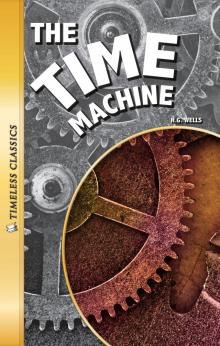 The Time Machine
The Time Machine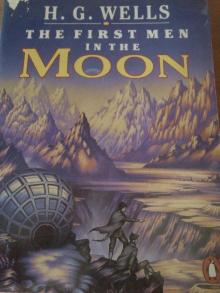 The First Men in the Moon
The First Men in the Moon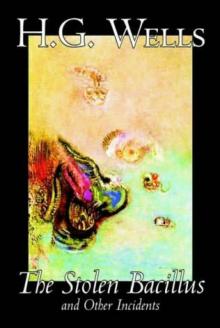 The Stolen Bacillus and Other Incidents
The Stolen Bacillus and Other Incidents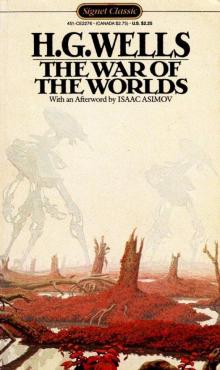 The War of the Worlds
The War of the Worlds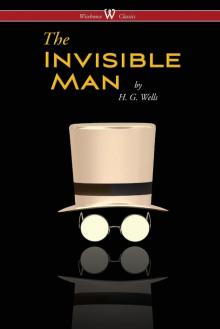 The Invisible Man: A Grotesque Romance
The Invisible Man: A Grotesque Romance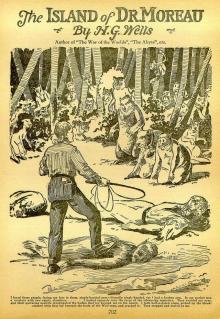 The Island of Doctor Moreau
The Island of Doctor Moreau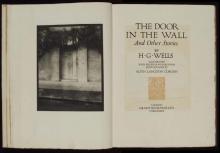 The Door in the Wall, and Other Stories
The Door in the Wall, and Other Stories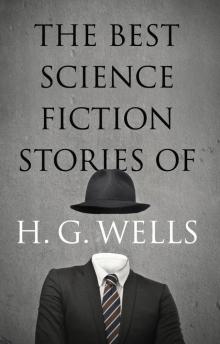 The Best Science Fiction Stories of H G Wells
The Best Science Fiction Stories of H G Wells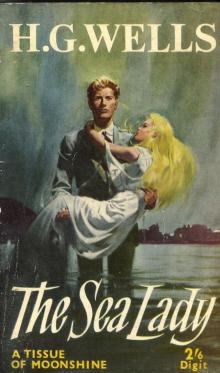 The Sea Lady
The Sea Lady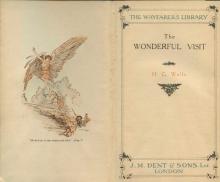 The Wonderful Visit
The Wonderful Visit Love and Mr. Lewisham
Love and Mr. Lewisham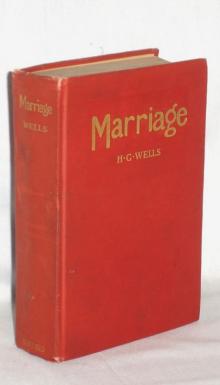 Marriage
Marriage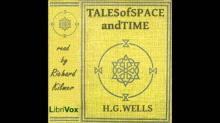 Tales of Space and Time
Tales of Space and Time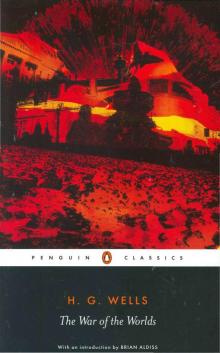 The War of the Worlds (Penguin Classics)
The War of the Worlds (Penguin Classics) Twelve Stories and a Dream
Twelve Stories and a Dream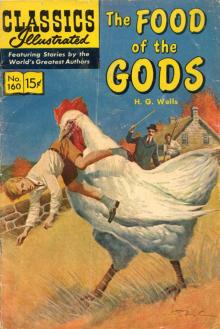 The Food of the Gods and How It Came to Earth
The Food of the Gods and How It Came to Earth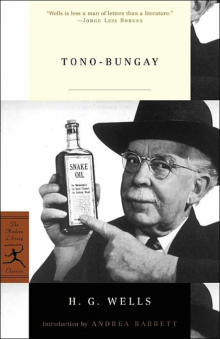 Tono-Bungay
Tono-Bungay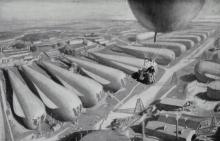 The War in the Air
The War in the Air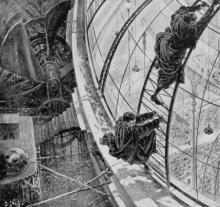 The Sleeper Awakes
The Sleeper Awakes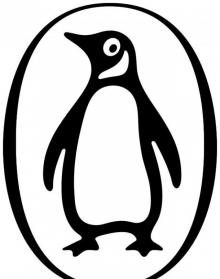 The Country of the Blind and Other Stories
The Country of the Blind and Other Stories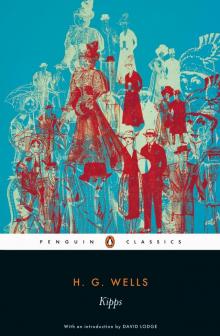 Kipps
Kipps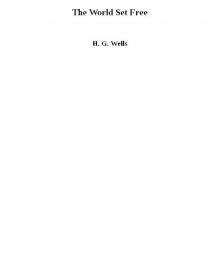 The World Set Free
The World Set Free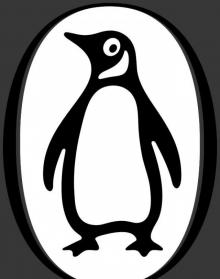 The Country of the Blind and other Selected Stories
The Country of the Blind and other Selected Stories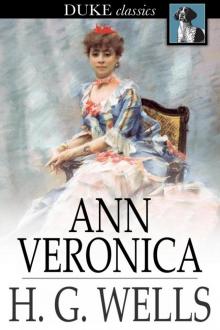 Ann Veronica
Ann Veronica Ann Veronica a Modern Love Story
Ann Veronica a Modern Love Story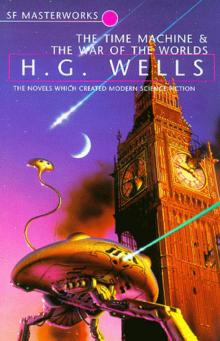 The Time Machine and The War of the Worlds
The Time Machine and The War of the Worlds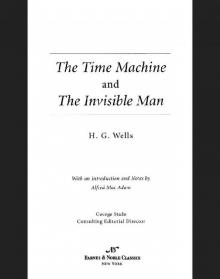 Time Machine and The Invisible Man (Barnes & Noble Classics Series)
Time Machine and The Invisible Man (Barnes & Noble Classics Series)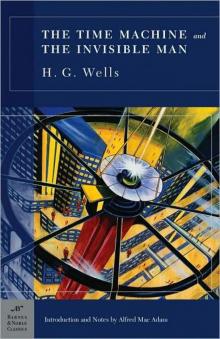 The Time Machine and The Invisible Man
The Time Machine and The Invisible Man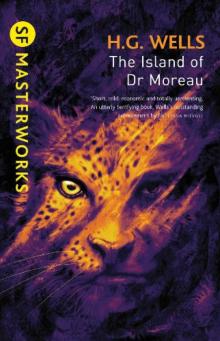 The Island of Dr. Moreau
The Island of Dr. Moreau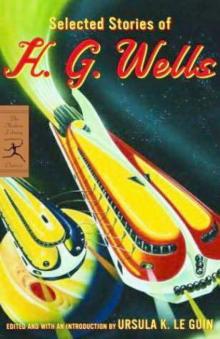 Selected Stories of H. G. Wells
Selected Stories of H. G. Wells Island of Dr. Moreau
Island of Dr. Moreau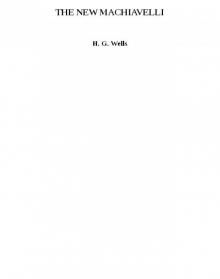 THE NEW MACHIAVELLI
THE NEW MACHIAVELLI